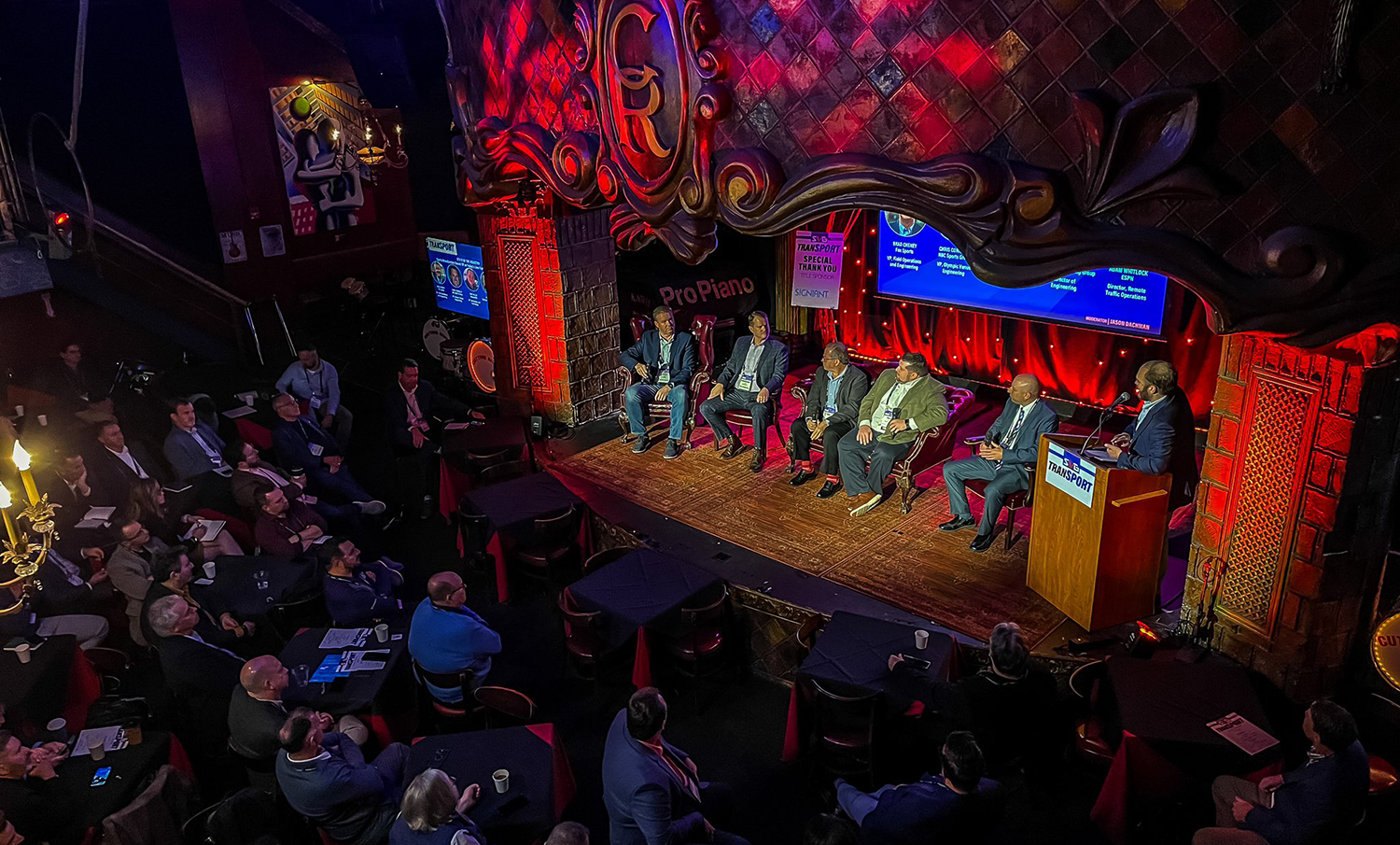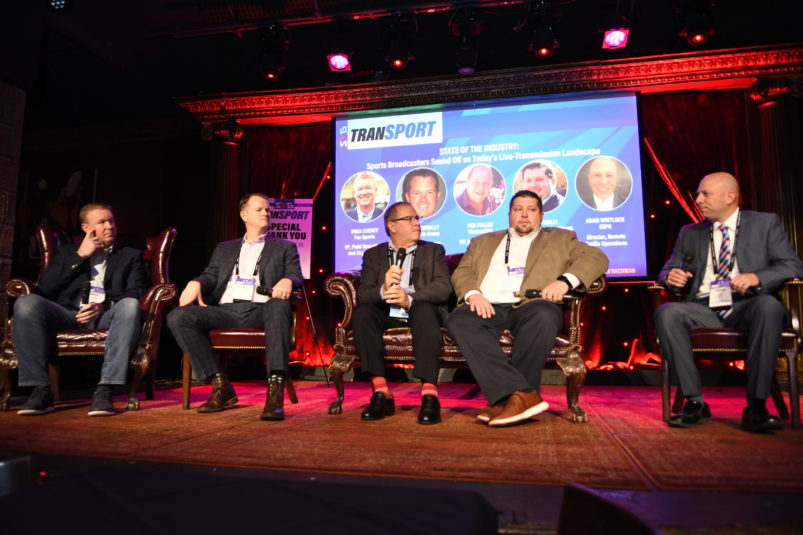SVG TranSPORT Conference’s Return to NYC Draws 200+, Spotlights Rapidly Evolving Live-Sports-Transmission Biz
Pandemic-spurred changes affect contribution and distribution
Story Highlights
SVG’s annual TranSPORT conference took place in person for the first time in three years on Tuesday, offering a full day of sessions focused on the current state of live-sports-transmission technology. More than 200 attendees came together at The Cutting Room in New York City to discuss the industry’s most pressing contribution and distribution issues: the latest developments in fiber and satellite backhaul, IP and internet-based backhaul protocols, 5G and other next-gen technologies, 4K and HDR delivery, the rise of REMI and centralized-production workflows, and much more.

The 2022 SVG TranSPORT conference was held at the iconic Cutting Room concert venue in NYC.
This year’s event kicked off with welcoming remarks from TranSPORT’s title sponsor Signiant (featuring CMO Jon Finegold) followed by ESPN Director, Remote Traffic Operations, Adam Whitlock, who chaired the event.
Whitlock joined colleagues from the SVG TranSPORT Advisory Committee for the opening State of the Industry session, in which the transmission-focused executives addressed how their strategies and operations have evolved as a result of the pandemic and how they see the industry changing in the coming years.
In addition to Whitlock, the panel featured Brad Cheney, VP, field operations and engineering, Fox Sports; Chris Connolly, VP, Olympic venue engineering, NBC Sports Group; Ken Fuller, VP, distribution and technology, ViacomCBS; and Paul Spinelli, director, engineering, Sinclair Broadcasting Group.
Andy Rayner, chief technologist, Nevion, Sony, then presented a case study on how Norwegian broadcaster TV2 and telecom service provider Telenor will be building a groundbreaking sports-production ecosystem using Nevion solutions, products, and services.
The evolution of REMI/remote productions in recent years was accelerated by the pandemic, and, as a result, the transmission ecosystem for live production is undergoing tectonic change. With the surge in centralized, distributed, and cloud-based productions, broadcasters are tasked with providing backhaul connectivity for a flood of data and video feeds. The next panel focused on how REMI models create new contribution challenges while also opening up exciting new production workflows for live sports coverage. Moderated by Cheney, the session featured speakers from CBS Sports Digital, Globecast, LiveU, Signiant, and Skyline Communications.
Today, sports broadcasters are increasingly using internet-based transport solutions, including SRT, RIST, RTMP, and Zixi. Although traditional fiber- and satellite-based services continue to be the primary means of contribution, low-latency video-contribution methods have become widely accepted in the industry. The post-lunch session moderated by Whitlock addressed how internet-based backhaul is changing sports broadcasters’ transmission philosophy for live event production and featured panelists from Haivision, RIST Forum, The Switch, Teradek, and Zixi.

State of the Industry panel at SVG TranSPORT: (from left) Fox Sports’ Brad Cheney, NBC Sports Group’s Chris Connolly, ViacomCBS’s Brad Vuller, Sinclair Broadcasting Group’s Paul Spinelli, and ESPN’s Adam Whitlock
The conversation next turned to fiber, as Connolly joined speakers from Astound Business Solutions, Lumen, and Telstra to discuss the current state and future fiber networks. These industry leaders discussed how the use of fiber has evolved, how the explosion in REMI production has affected the sector, and how they are looking to invest in their infrastructure and expand their services moving forward.
Following fiber talk, the topic was satellite. As more and more sports broadcasters turn to IP contribution, the role of satellite has evolved. In addition, the looming loss of C-band spectrum will dramatically impact both the occasional-use and the long-term satellite ecosystem. Although satellite remains one of the most robust and reliable services for live-sports-production backhaul, it faces capacity and technological challenges. This panel featuring Warner Bros. Discovery Manager, Content Transmissions, Julie Morrison (an SVG TranSPORT Advisory Committee member), Spinelli, and representatives of ARCTEK Satellite Productions, SES Satellites, and ST Engineering iDirect addressed the current state of satellite services and where the sector is headed in the future.
For several years, 5G has topped the technology-buzzword standings as a solution promising to revolutionize the industry. For the most part, however, use of 5G as a transport method for live sports productions has been limited to one-off tests and proofs-of-concept. When will 5G be stable enough for large-scale deployment of live-production backhaul solutions, and how will it boost bonded-cellular technologies? The day concluded with a virtual interview with Alessandro Reitano, SVP, sports production/chairman, Sports Video Group Europe, and a 5G-focused panel featuring Haivision, LiveU, Verizon Business Group, and Vislink.
The 2022 TranSPORT conference was made possible by Title Sponsor Signiant; Gold Sponsors Haivision, LiveU, ST Engineering iDirect, The Switch, Teradek, and Verizon; Case Study Sponsor Sony; Silver Sponsors Astound, Lumen, TAG VS, and Zixi; and Event Sponsors FOR-A, Globecast, Media Links, and Net Insight.
